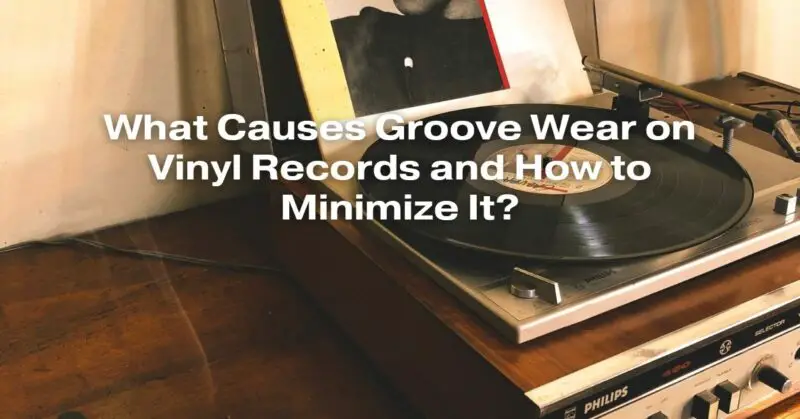Vinyl records have made a remarkable comeback in recent years, appealing to both audiophiles and younger generations rediscovering the charm of analog music. However, vinyl records are not immune to wear and tear, especially in the form of groove wear. Groove wear occurs when the stylus (needle) of the turntable wears down the grooves of the record, diminishing sound quality over time. In this article, we will explore the various factors causing groove wear and provide comprehensive tips on how to minimize it, ensuring your vinyl collection stands the test of time.
Understanding Groove Wear
Vinyl records work by translating the physical grooves on the surface into sound waves. When a stylus is placed in the groove, it reads the microscopic modulations in the groove walls, reproducing the recorded sound. Groove wear happens due to the friction between the stylus and the vinyl surface. Several factors contribute to this friction:
- Stylus Quality: A poorly manufactured or worn-out stylus can cause excessive friction, leading to rapid groove wear. Investing in a high-quality stylus made from diamond or a durable material is essential.
- Tracking Force: The tracking force, or the pressure exerted by the stylus on the record, needs to be balanced. Too much pressure causes unnecessary wear, while too little pressure can result in distortion. Refer to your turntable’s manual to set the correct tracking force for your cartridge.
- Anti-Skating: Anti-skating mechanisms prevent the tonearm from exerting uneven pressure on the groove walls. Incorrect anti-skating settings can lead to one side of the groove wearing out faster than the other.
- Dust and Debris: Dust particles and debris on the record surface can act as abrasives, hastening groove wear when the stylus passes over them. Regular cleaning of both records and stylus is crucial.
- Record Quality: Poorly manufactured or warped records are more susceptible to groove wear. Always handle your records carefully and store them vertically to prevent warping.
Minimizing Groove Wear
- Invest in Quality Equipment: Start with a good turntable, tonearm, and cartridge. High-quality components reduce unnecessary wear and tear on your vinyl records.
- Proper Setup: Follow the manufacturer’s guidelines for setting up your turntable, including correct tracking force, anti-skating, and tonearm alignment. A well-calibrated system significantly reduces groove wear.
- Cleanliness is Key: Clean your records before and after each use with a carbon fiber brush or a record cleaning machine. Also, regularly clean your stylus using a stylus brush to remove accumulated dust and debris.
- Handle with Care: Always handle your records by the edges to prevent fingerprint smudges and potential scratches. Store them vertically in sturdy record sleeves and keep them away from direct sunlight and extreme temperatures.
- Upgrade Wisely: If you notice degradation in sound quality despite proper care, consider upgrading your stylus or cartridge. Modern stylus materials and advanced engineering can offer better performance and longevity.
- Rotate Your Collection: Regularly rotate the records you play. Avoid playing the same vinyl repeatedly, as this can wear down specific tracks or sections of the grooves faster.
Conclusion
Preserving the lifespan and sound quality of your vinyl collection requires a combination of proper equipment, careful handling, and regular maintenance. By understanding the causes of groove wear and following the tips provided, you can ensure that your cherished records continue to provide exceptional audio experiences for years to come. Embracing these practices not only enhances the longevity of your vinyl but also enriches your overall listening pleasure, allowing you to appreciate the depth and nuance of analog music in its full glory.


